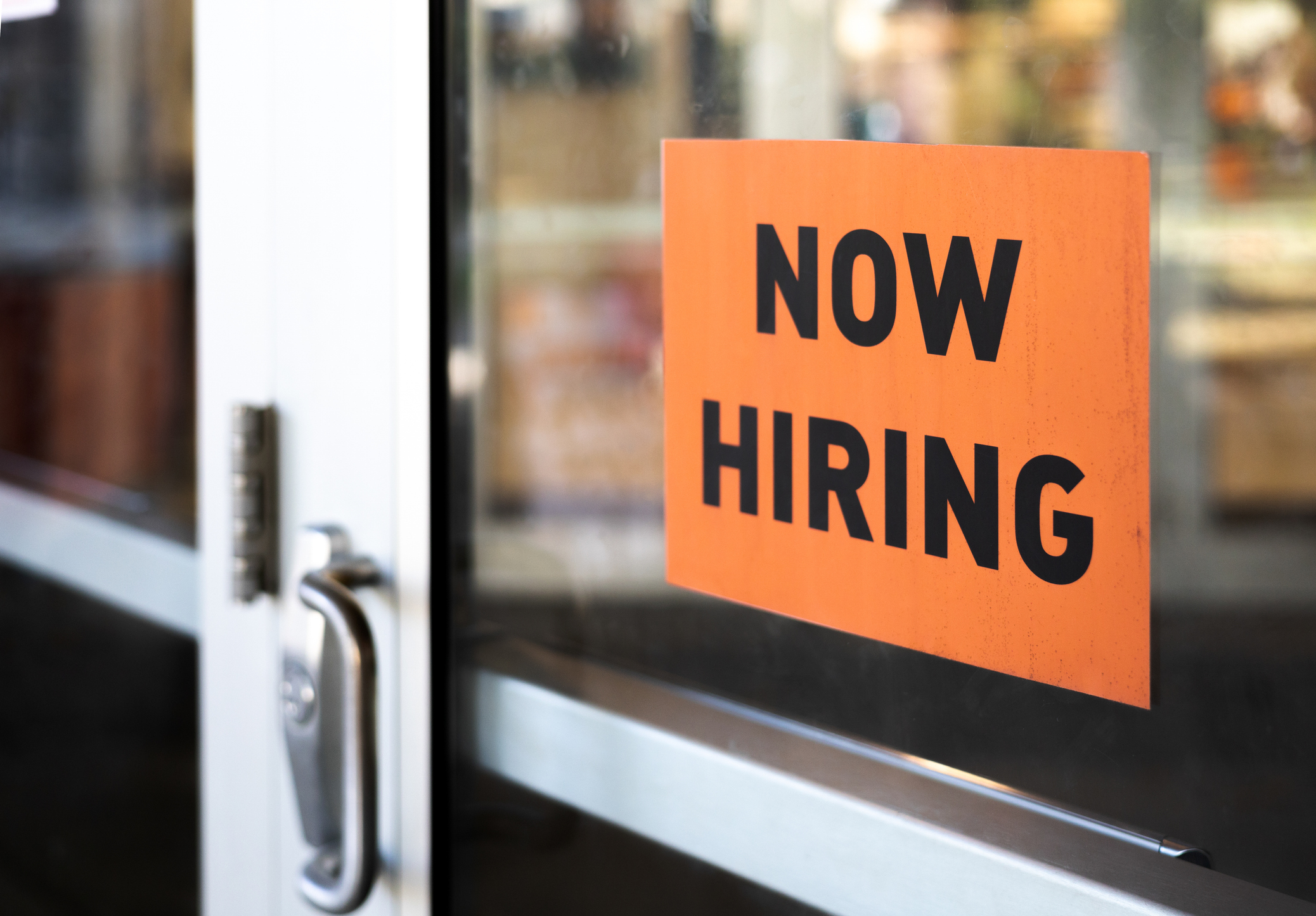May Job Openings Top Expectations: What to Know
Job openings in May were higher than economists expected, while April's number was revised lower. Here's what you need to know.


The Job Openings and Labor Turnover Survey (JOLTS) released this morning by the Bureau of Labor Statistics (BLS) topped expectations and kicked off a busy week of jobs data.
The mid-morning report showed the number of job openings ticked slightly higher in May, to 8.1 million from 7.9 million in April. The April number was revised lower by 140,000 from its initial release last month. The data also revealed that the job openings rate ticked higher to 4.9% in May from 4.8% in April.
The JOLTS number for May beat economists' expectations. According to Comerica, job openings were estimated to decline to 7.9 million.
From just $107.88 $24.99 for Kiplinger Personal Finance
Be a smarter, better informed investor.

Sign up for Kiplinger’s Free Newsletters
Profit and prosper with the best of expert advice on investing, taxes, retirement, personal finance and more - straight to your e-mail.
Profit and prosper with the best of expert advice - straight to your e-mail.
"Job openings were slightly higher than expected in May, though the upbeat message was partially offset by downward revisions to April's openings," said Bill Adams, chief economist at Comerica.
Adams notes that the JOLTS data gives context to Wall Street, allowing it to "understand why the job market is doing what it's doing. That context shows that the gradual slowdown in U.S. job growth over the last few years is due to a much bigger slowdown in labor market churn, meaning fewer people quitting jobs and being hired by other employers."
The economist adds that slowing wage growth – a measure of inflation – can be attributed to the slowdown in the job market, since "getting a new job is a big driver of wage growth."
Job openings data hits ahead of June jobs report
The next big economic report is the Employment Situation Summary – also known as the jobs report or nonfarm payrolls report – which will be released by the Bureau of Labor Statistics at 8:30 am Eastern this Friday.
"The jobs report gives us a comprehensive look at the labor market, which is ultimately what fuels consumer spending," writes Dan Burrows, senior investing writer at Kiplinger, in his feature "When Is the Next Jobs Report?". "Recall that consumer spending accounts for about two-thirds of all U.S. economic activity, and you can see why the jobs report has always been front and center."
More recently, jobs data and wage pressures have made the Federal Reserve anxious about cutting interest rates. "Cut too soon, with a healthy economy and labor market as the backdrop, and inflation could accelerate again, the thinking goes.," Burrows adds.
According to CME Group's FedWatch Tool, futures traders are currently pricing in a 63% chance the Fed will issue its first quarter-point rate cut in September, up from 47% one month ago.
Related Content
Profit and prosper with the best of Kiplinger's advice on investing, taxes, retirement, personal finance and much more. Delivered daily. Enter your email in the box and click Sign Me Up.

Joey Solitro is a freelance financial journalist at Kiplinger with more than a decade of experience. A longtime equity analyst, Joey has covered a range of industries for media outlets including The Motley Fool, Seeking Alpha, Market Realist, and TipRanks. Joey holds a bachelor's degree in business administration.
-
 Your Estate Plan Isn't Complete Until You've Done These Steps
Your Estate Plan Isn't Complete Until You've Done These StepsCongratulations on getting your estate plan in order. Now, you need to communicate the relevant details to ensure your plan is effectively carried out.
-
 A Nightmare for Parents: Navigating Tenant Rights in a Crisis
A Nightmare for Parents: Navigating Tenant Rights in a CrisisThis family's story illustrates how important it is to get help sooner rather than later and highlights the complexities of tenant rights and legal protections.
-
 Your Estate Plan Isn't 'Done' Until You've Completed These Five Steps, From an Estate Planning Attorney
Your Estate Plan Isn't 'Done' Until You've Completed These Five Steps, From an Estate Planning AttorneyCongratulations on getting your estate plan in order. Now, you need to communicate the relevant details to ensure your plan is effectively carried out.
-
 A Nightmare for Parents: How to Navigate the Legal Boundaries of Tenant Rights During a Family Crisis
A Nightmare for Parents: How to Navigate the Legal Boundaries of Tenant Rights During a Family CrisisThis family's story illustrates how important it is to get help sooner rather than later and highlights the complexities of tenant rights and legal protections.
-
 Amazon Surge Sends S&P 500, Nasdaq Higher to Start November: Stock Market Today
Amazon Surge Sends S&P 500, Nasdaq Higher to Start November: Stock Market TodayAmazon inked a $38 billion cloud deal with OpenAI, which sent the stock to the top of the Dow Jones on Monday.
-
 If You'd Put $1,000 Into Home Depot Stock 20 Years Ago, Here's What You'd Have Today
If You'd Put $1,000 Into Home Depot Stock 20 Years Ago, Here's What You'd Have TodayHome Depot stock has been a buy-and-hold banger for truly long-term investors.
-
 Eight Steps to Help Get You Through the Open Enrollment Jungle at Work
Eight Steps to Help Get You Through the Open Enrollment Jungle at WorkWondering how to survive open enrollment this year? Arm yourself with these tools to cut through the process and get the best workplace benefits for you.
-
 Seven Moves for High-Net-Worth People to Make Before End of 2025, From a Financial Planner
Seven Moves for High-Net-Worth People to Make Before End of 2025, From a Financial PlannerIt's time to focus on how they can potentially reduce their taxes, align their finances with family goals and build their financial confidence for the new year.
-
 I'm a Financial Planner: These Are the Seven Tiers of Retirement Well-Being
I'm a Financial Planner: These Are the Seven Tiers of Retirement Well-BeingLet's apply Maslow's hierarchy of needs to financial planning to create a guide for ranking financial priorities.
-
 Why More Americans Are Redefining Retirement, Just Like I Did
Why More Americans Are Redefining Retirement, Just Like I DidRetirement readiness requires more than just money. You have a lot of decisions to make about what kind of life you want to live and how to make it happen.